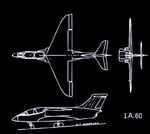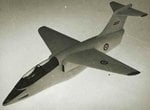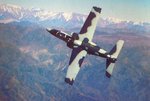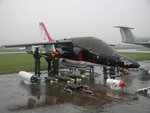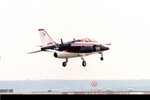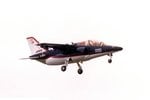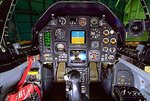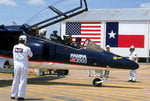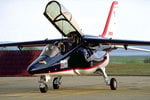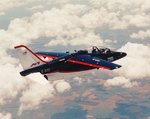CharlesBronson
Senior Master Sergeant
A somewhat complicated story of a very good aircraft.
Origins:

In april 1979 the Argentine Air Force (AAF) through an "Directive of development" put in charge the FMA (Military Aicraft Factory) of the city of Cordoba the studies and manufacturing research for a new medium-advanced jet trained. the main goal of the directive was to replace the 56 Morane Saulnier MS 760 Paris, 50 of them manufactured under license in the same factory.
Things had moved forward since tha adoption of the Paris and the AAF didnt wish to lay behind in technological develpment. In the preliminary draft 4 design with single engine and 3 with a single powerplant always combing with low or high emplacement wing were on the table, the later shape in a single engined aircraft was the choice because easier manintenance and economy.
The Powerplant:
The 2nd stage was to choose the engine, in the order of 1360 to 1590 kilos of thrust. The FMA was at the beginning interested in the Pratt whitney JT15D-5, an slightly improved variant of the JT15D-4. However that variant did not had at that time (1981) the certification of aproval by the Federal aviation Administration so the program moved on in order not to affect the schedule. Eventually the Garret TFE-731-2-2N was elected, althought it was a little less powerful than the P&W it had the advantage of being already in service with the AAF in his 2nd Air Brigade photo recce Learjet 35s, so the maintenace and spare parts supply was spected to be trouble free.
Garret TFN-731-2

Namesake:
The aircraft received the new designation serial IA-63 (IA being the prefix for Instituto Aerotecnico, aerotechnical institute, the design bureau inside the FMA complex). At first the new jet had no a "name" but eventually in 1981 the word pampa was choosed. Pampa has a lot of significances being not only a region of Argentina but also a province, a wind wich race trought the midsouth, and a race of natives.
Origins:

In april 1979 the Argentine Air Force (AAF) through an "Directive of development" put in charge the FMA (Military Aicraft Factory) of the city of Cordoba the studies and manufacturing research for a new medium-advanced jet trained. the main goal of the directive was to replace the 56 Morane Saulnier MS 760 Paris, 50 of them manufactured under license in the same factory.
Things had moved forward since tha adoption of the Paris and the AAF didnt wish to lay behind in technological develpment. In the preliminary draft 4 design with single engine and 3 with a single powerplant always combing with low or high emplacement wing were on the table, the later shape in a single engined aircraft was the choice because easier manintenance and economy.
The Powerplant:
The 2nd stage was to choose the engine, in the order of 1360 to 1590 kilos of thrust. The FMA was at the beginning interested in the Pratt whitney JT15D-5, an slightly improved variant of the JT15D-4. However that variant did not had at that time (1981) the certification of aproval by the Federal aviation Administration so the program moved on in order not to affect the schedule. Eventually the Garret TFE-731-2-2N was elected, althought it was a little less powerful than the P&W it had the advantage of being already in service with the AAF in his 2nd Air Brigade photo recce Learjet 35s, so the maintenace and spare parts supply was spected to be trouble free.
Garret TFN-731-2

Namesake:
The aircraft received the new designation serial IA-63 (IA being the prefix for Instituto Aerotecnico, aerotechnical institute, the design bureau inside the FMA complex). At first the new jet had no a "name" but eventually in 1981 the word pampa was choosed. Pampa has a lot of significances being not only a region of Argentina but also a province, a wind wich race trought the midsouth, and a race of natives.
Last edited:

